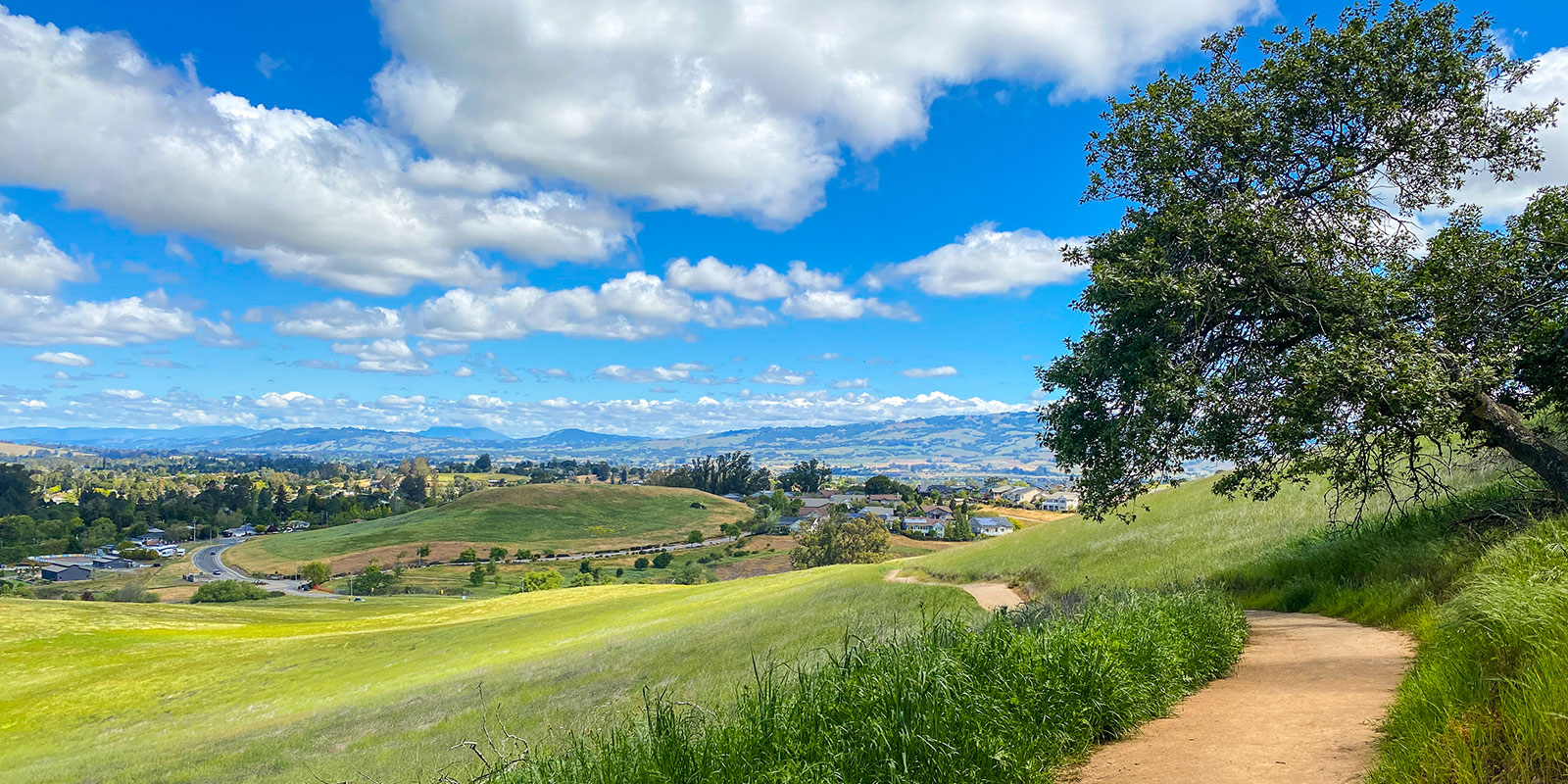Happy trails: What it takes to make a good hiking trail
By Stephen Nett
A good trail is like a comfortable pair of shoes: It feels welcoming and pleasing under foot and takes you confidently to a favorite destination and back.
Sonoma County’s Regional Parks have a wide selection of trails to choose from. But making a good trail takes a lot more than meets the eye.
Trails Through History
Modern park trails are carefully crafted, though it's worth noting that the walking trail is ancient technology. Thousands of years before Sonoma County had roads, such paths were essential to people to move efficiently around the landscape.
The first trails walked by humans in Sonoma County were likely created by wildlife, worn into the landscape by repeated trips to water and grazing meadows. Native peoples later established their own routes to resources and to trading and ceremonial centers. Tolay Lake in Tolay Regional Park, for example, was likely connected by trails to the greater Bay Area and beyond.
Portals into Nature
Today’s trails provide more than simple transportation. One of the roles of modern park trails is to provide portals for the public into nature and protected wildlands. The only way most of us will ever experience a mountain pond or glimpse a bobcat is because a park trail brought us there.
Good trails also remove obstacles that keep people from the outdoors. Many, like the Valley of the Moon Trail at Sonoma Valley Regional Park, pictured below, and the Cloverdale River Park trail, are specifically crafted so people with a range of physical abilities can experience wild environments and scenic beauty.

Details Underfoot
Trails also protect the wildlife, natural features and environments within the parks. Before a trail is built, park planners evaluate and field check countless routes where it might pass, looking for sensitive habitat, plant and animal species that need to be protected or avoided, as well as points of interest or educational value. These are mapped as "control points" that help steer where the trail will and won’t run.
A lot of details need to be considered. Wildlife need undisturbed places for raising young and corridors for movement. The lay of the land, steepness of the path, rocks, roots and other obstacles, get factored in. And the trail itself must be engineered so it’s relatively comfortable underfoot, can be reasonably maintained, and water can drain naturally. Such details are largely invisible in the final product.

This careful engineering is on display on the Ridge Trail in North Sonoma Mountain Regional Park and Preserve, pictured above. Opened in 2015, the trail’s long and gentle zig zags lead hikers 2,700 feet up the mountain. Its rock drainages and other subtle construction features make it an impressive segment of the larger Bay Area Ridge Trail that one day is hoped to link the mountains around San Francisco.
Crafted by Hand

Surprisingly, much of the trail construction in Regional Parks is done by hand, by everyday folks who volunteer their time. In addition to Regional Parks, groups like Volunteers for Outdoor California and Redwood Trails Alliance organize local enthusiasts to expand or maintain trail routes. They’re always looking for new hands to join.
And in some parks, the trails continue to grow. Taylor Mountain Regional Park and Preserve opened in 2013 with only several miles of trails. Volunteers, pictured above, have since built the Todd Creek and RedTail trails. And construction is set to begin on another 8 miles of trail in the park, thanks to a $1.7 million grant to Regional Parks.
Dirt Roads Don't Always Make Great Trails
But many of our Regional Parks are former ranches, and their trails trace old farm or fire roads already on the property. Tracks like these – in Shiloh, Foothill, Helen Putnam, Hood Mountain, and Tolay Lake – were laid down by previous owners for utilitarian purposes, not necessarily for the enjoyment of future hikers, cyclists, or equestrians.

Regional Parks has renovated many miles of these trails already and plans to rehab many more, as funding allows. The work would bring trails like this old farm road at Helen Putnam Regional Park up to modern standards and make them less prone to erosion or not as steep.
Find Your Trail
Sonoma County has a bounty of options for those who want to enjoy the human experience of moving through the landscape on trails. You can discover Regional Parks' 150 miles of trails on its Find a Park page, or by joining a guided hike.
Stephen Nett is a Bodega Bay-based Certified California Naturalist, writer, and speaker.
Originally published September 1, 2018. Updated September 2025.



 Translate
Translate